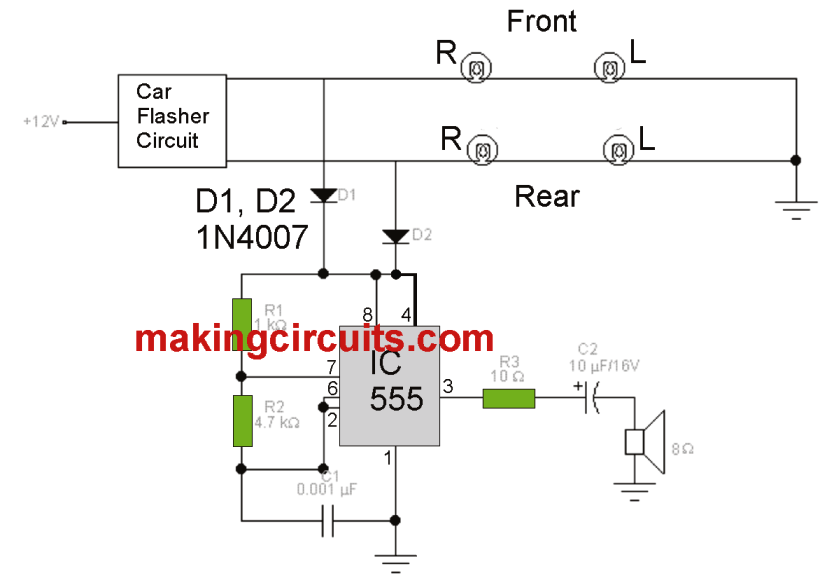Whenever the left or right directional blinker lights come on in a car, it is almost always the situation that happens prior to taking a turn, through a little movement of the steering wheel. These turn lights happen to be deactivated well before time, without the motorist knowing. This kind of scenario could possibly create a major accident because other vehicles that may be just behind does not have any means of becoming alert to slow down.
Additionally, it usually transpires that the driver initiates the parking lights, turn off the car and move out, allowing these to be ON unintentionally, and slowly discharging away the car's battery.
These types of complications could be solved with an ideal device that comes ON immediately with the activation of the lights. In the circuit here we are able to see a tiny oscillator that is in charge of producing an audible tone every time the turn indicator lamps or parking lights are switched on.
The oscillator is founded on the integrated circuit 555. The frequency of the audio could be altered via the resistors R1 and R2 and the capacitor C1. The diodes D1 and D2 tend to be of great significance, given that they accomplish the functionality of a valve system to avoid the current from entering the other lights just in case you only want to switch on one side lamps.

Leave a Reply